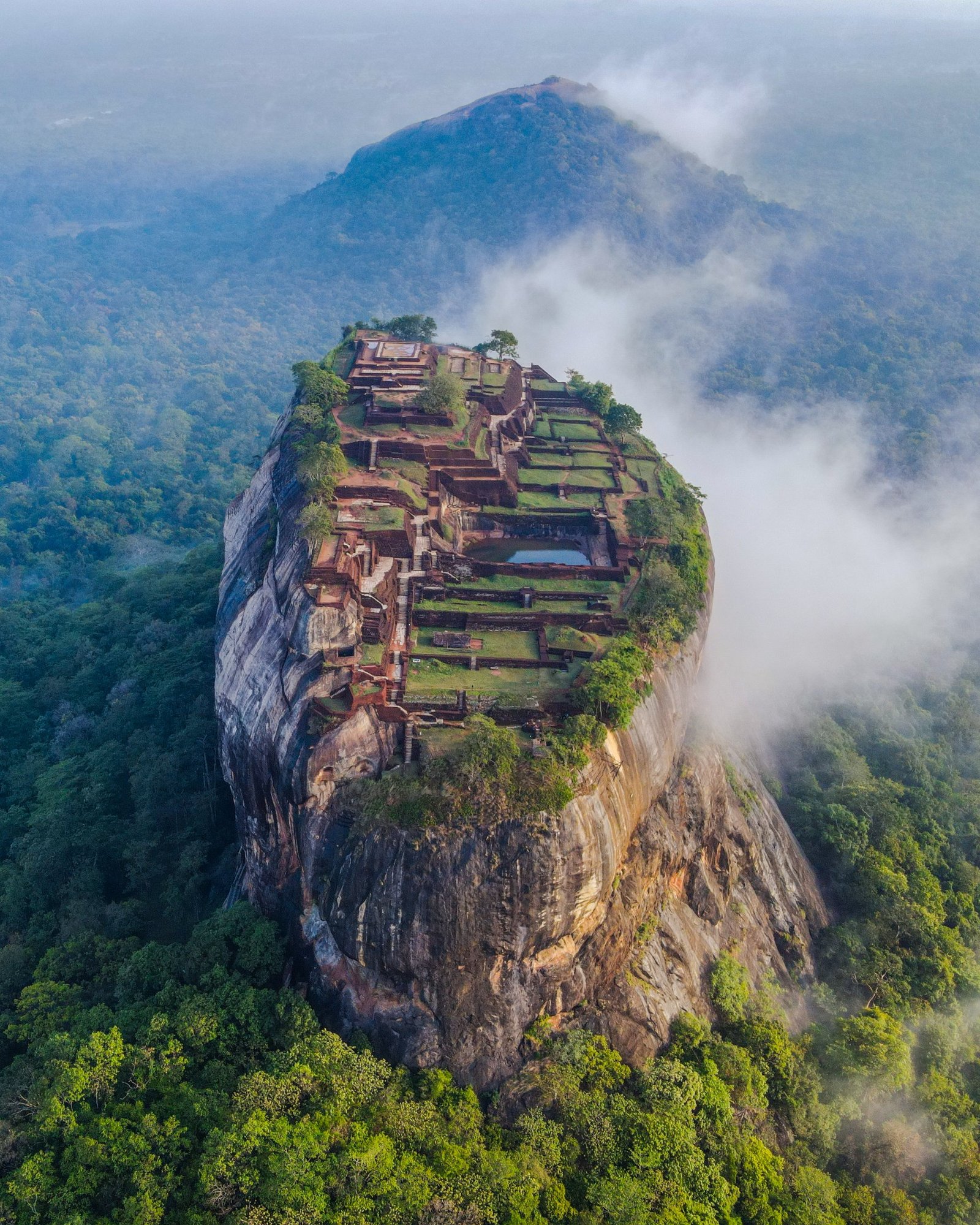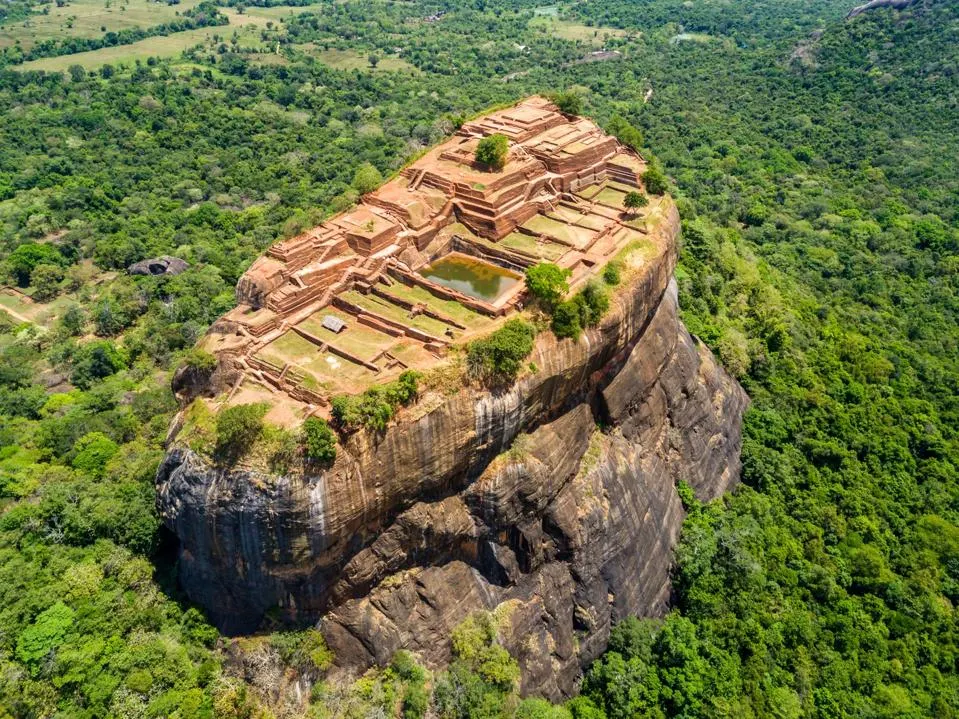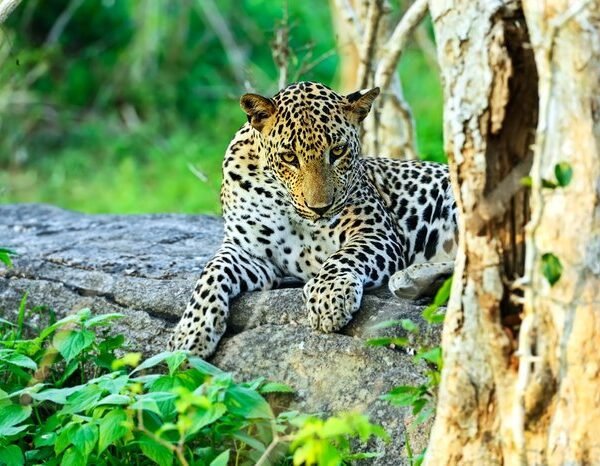Sri Lanka’s Popularity Is Surging With Travelers. Here’s Where To Go
Contributor
I cover drinks, travel, and food, and the intersection of all three.Follow

For centuries, Sri Lanka has been popular with foreign travelers. Around 300BC, at the time of Alexander the Great, the ancient Greeks called the island Palaesimoundu, meaning ‘beyond the sea,’ and wrote of its mythical treasures. Chinese Buddhist monk Fa-Hien visited Sri Lanka around 410 AD and liked it so much that he stayed for two years. In the twelfth century, Italian explorer Marco Polo declared Sri Lanka the “best island of its size in the world.” In 1896, Mark Twain, of Huckleberry Finn fame, wrote, “Dear me, it is beautiful… Oriental charm and mystery, and tropic deliciousness.”
Fast-forward to 2024, and the country has seen tourism revenue increase by 122% in January 2024. The reasons why aren’t hard to deduce. Sri Lanka is a world-in-one island of palm-fringed beaches, rice paddies and lily ponds, ancient cities, lush rainforests, tea estates and generous, welcoming people. If you’re looking for itinerary ideas and highlights, keep reading.

Sigiriya
Sigiriya, or Sinhagiri, is an ancient rock fortress located in the northern Matale District near the town of Dambulla in the Central Province. The site is defined by a pair of monumental paws that form what was once the base of a whole lion. Five thousand years ago, the structure was commissioned and built from nearly three million stones and bricks stretching to the top of a massive monolith of red rock.
However, the origins of Sigiriya’s habitation are shrouded in myth and mystery. What remains today is a more recent legacy, dating back a mere 2,500 years to the reign of King Kashyapa. Like all incredible ruins, this one comes with a dramatic story. Kashyapa is said to have entombed his father alive and stolen the throne from his half-brother, who then fled to India to plot a terrifying and brutal revenge. Fearing his brother’s return, Kashyapa sought refuge atop the mighty rock and built himself a fortress as ornate as it was fortified.
After reigning only 14 years, the turn of events he’s been dreading arrives. Kashyapa’s brother returns to enact his revenge. In a scene in Lord of the Rings, the king is mounted on his war elephant and leads his army into battle. Seeing a swamp ahead, he turns his elephant to find firmer ground. His army, thinking he’s retreating, flees the battlefield. Abandoned, alone and desperate not to fall into his brother’s hands, Kashyapa unsheathes his jewel-encrusted dagger, places its blade at his neck and slits his own throat.
Passport: Explore the finest destinations and experiences around the world in the Forbes Passport newsletter.Get the latest news on special offers, product updates and content suggestions from Forbes and its affiliates.Sign Up
Climb through the giant paws onto a metal staircase attached. One thousand two hundred seventy steps later, you’ll reach the final dizzying flight of stone stairs, each cut from pale quartz to shine brightly in the moonlight. The views from the top will take the last of your breath away.

Dambulla
Dambulla, a UNESCO World Heritage site, is one of the best-preserved cave temples in Asia. Located at the top of 370 granite stairs, the temple complex towers 524 feet over the surrounding plains. Thought to be over 2,000 years old, they still house Sri Lankan Buddhist monks. The five cave temples fan out under a vast overhanging rock and are filled with a collection of ancient murals, intricately painted ceilings and 153 hand-carved stone statues of the Buddha.

Anuradhapura
Nearby Anuradhapura, a major city located in Sri Lanka’s north-central plain and the first ancient capital of the country, is a city that thrived from the 4th century BC to the 11th century AD. Giant stupas tower above the tropical jungle, mystical moonstones mark the entranceways to temples, and ruins of vast monastic complexes lay scattered over many square miles. For nearly a millennium, Anuradhapura’s kings commissioned opulent palaces, intricate sculptures, vast stupas, some of the world’s first hospitals, and monasteries and monastic colleges that were some of the oldest universities in the world. All this centered around one of the oldest trees in the world, the sacred Sri Maha Bodhi Tree, a 3rd-century BC cutting from the famous Bodhi tree in India, where the Buddha had sat and gained enlightenment.

Kandy
Another essential temple visit on any Sri Lankan itinerary is Kandy. Once the capital of an ancient kingdom, Kandy is tucked beside a lake in the middle of Sri Lanka’s central highlands and surrounded by tea plantations. Kandy is home to The Temple of the Tooth Relic, which houses the relic of the Tooth of Buddha, resting in a golden casket dripping with ropes of shimmering pearls. According to legend, mourners had rescued the Tooth from the Buddha’s cremation pyre nearly 2,500 years ago. Since ancient times, this Tooth has played an important role in Sri Lanka’s politics. Wars have been fought over it. It’s believed that whoever possesses the Tooth is destined to rule Sri Lanka.
The Tooth attracts more than a million pilgrims every year. Throngs of people squeeze into the temple’s narrow corridors, the air heavy with the scent of lotus blossom, jasmine and frangipani. Lanterns and devotional candles flicker, illuminating ornate panels embellished with frescoes of golden gods and goddesses. Barefoot devotees file slowly along a wooden gallery, leaving floral offerings on long tables in front of the shrine while waiting patiently for the interior temple doors to open and give them a glimpse of the sacred relic.

Head for the Ceylon Tea Hills
The most atmospheric journey from Kandy to tea country is by train. A serpent of blue metal, the train passes through vibrant tea plantations, with curtains of eucalyptus and pine trees on one side and mountains and towering ravines on the other. Travelers and locals alike hang out the open doors, catching the breeze and posing for photos while vendors offer samosas and other snacks. Climb down at Hatton station and set off into the world of tea.
Ceylon Tea Trails is a collection of five restored heritage tea planters’ bungalows dotted among the plantations of the Dilmah tea estates. With a nostalgic charm and a distinctly British feel, the estate harks back to Sri Lanka’s past, with butlers, afternoon teas, manicured gardens and croquet offered on the lawn. While there, tour the tea factory for some insights into the process of production, from picking to packing and drinking.

Galle
From the tea country, head to Galle, a beautiful city with a vibrant history to match. Situated on the coast, the bright white Galle Fort, which dates back to 1663, is a place of cobblestoned streets and Dutch colonial buildings. Galle’s origins are ancient. As a seaport, it dates back millennia; cinnamon has been shipped from here for a thousand years, and it was here that King Solomon came for ivory, peacocks, and other treasures. After Portuguese and then Dutch colonization, Galle was a hotspot on the spice route and was Sri Lanka’s main port for 200 years.
The best way to take it in is to wander the streets of the old town. Sites include the magnificent gabled Dutch Reformed Church, the ochre-colored Old Dutch Warehouses, the Galle Dutch Hospital, and Law Court Square with its ages-old banyan trees. Climb the ramparts at Aurora Bastion, wander past the slender lighthouse and end up at Moon Bastion, which overlooks the new town and the cricket ground. Visit shops and quirky cafés, and in the evenings, drink Sri Lankan arrak, made from the fermented sap of coconut flowers.

Balapitiya
An hour’s drive from Galle, Balapitiya is a peaceful oasis near a traditional coastal fishing village featuring golden soft beaches and the endless Indian Ocean stretching to the horizon. Surrounded by paddy fields, coconut plantations, and cinnamon estates, Balapitiya offers the chance to unwind from the noise and chaos of Sri Lanka’s roads and cities.

Sustainable Tour Operators
As more travelers look to curb their environmental and social footprint, tour operators are stepping up. While the travel industry is rife with greenwashing, a few companies have issued statements of transparency, including Jacada Travel. The London-based company provides bespoke travel experiences that are driven by positive impact. Recently, Jacada Travel launched its Positive Impact Collection, a curated selection of properties spanning Africa, Latin America, Europe and Asia Pacific.
Each property within this collection is dedicated to fostering positive change by implementing a range of initiatives that align with the United Nations’ Sustainable Development Goals (SDGs). These initiatives encompass key elements of sustainability, focusing on environmental stewardship, social responsibility and economic development.









